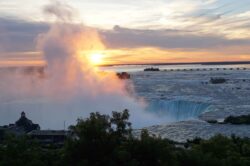Ready to Draw the Purrfect Cat? Colored Pencil Tips You’ll Love

Draw a Realistic Cat, Starting Meow!

Have you ever followed a bread crumb trail when scouring the internet which led to watching hours-worth of funny cat videos on YouTube? It’s OK. We are all friends here. I have done it, too — and on more than one occasion. Although this post doesn’t include any funny cat videos (though you may want to venture off to YouTube cat land after this), it will focus entirely on cats. Because when it comes to drawing our feline friends like a pro, forms and shapes are everything. If you want to learn how to draw realistic cats, or just practice your shapes and forms, then keep on reading!
Below, artist Mark Menendez shares the most important aspect of drawing this popular subject. But if cats aren’t your thing, don’t worry. His tips can be applied to other subjects as well. Enjoy!
Colored Pencil: Understanding Basic Forms
Animal portraits created with colored pencil techniques are a popular subject in my classes and seminars, and many of my students want to learn how to draw cats. Whether shorthair or longhair, the feline form can be challenging. The bulk of art instruction books and videos, especially those demonstrating colored pencil, focus on detail. I prefer instruction that focuses on basic forms. While the handling of detail is essential in any work of art, it is only one element in creating a drawing or painting of merit. To me, the capturing of form, through a faithful rendering of light and shadow, is much more vital than detail. Therefore, as I teach, I have always put emphasis on first capturing form, whatever the subject, as revealed by the direction, position, quality and temperature of the light source illuminating the subject, and then applying the detail.

The use of basic forms is almost always included in the first few pages of every beginner drawing book or video. Yet I find students, whether my young artists or my “seasoned citizen” students, often want to skip past that section of the instruction.They prefer to get right to the details. In my opinion, they’re skipping the stage of the drawing that renders the illusion of three dimensions. Why is this so? Consider this: When someone sets out to bake a birthday cake, you wouldn’t start by mixing the icing and decorating by piping the borders, leaves and flowers. No, you would bake the cake first! The two layers, one stacked upon the other, is the form upon which all the icing, borders, leaves and flowers is built. You can’t decorate without that foundational form underneath. And so it is with any three-dimensional subject you draw or paint.
Be One with Nature
The basic forms found most often in nature are the sphere, cone, cylinder and cube. When you observe the four basic forms, you may discover they each have a distinctive “shadow shape.” Many times the shadow shape on a spherical form is in the shape of a crescent; the cone, a triangular shadow; the cube is identified by a quadrangular shadow shape; and on the cylinder, the shadow runs in a rectangular fashion, running along the sides of the form. The feline form, as observed, can be created from the sphere (the head and body); the cone (the ears, snout and feet); and the cylinder (the legs and tail). After sketching a cat using the basics forms, you then observe the shadows and render the shadow shapes as observed on your subject, With the shadows in place, then you can add the fur texture, features, and other details, As I repeat so often in my class, “Form first, details last!”
 Artists Network Membership - 1 Year
Artists Network Membership - 1 Year  Breakthrough Paint Along: Where Mixed Media Combine Together
Breakthrough Paint Along: Where Mixed Media Combine Together  Paint Along 127: Paint the Motion of the Sea
Paint Along 127: Paint the Motion of the Sea  Paint Along 126: Simplify Your Landscapes with a Limited Palette
Paint Along 126: Simplify Your Landscapes with a Limited Palette  Breakthrough Paint Along: The Big Value of Miniature Landscapes
Breakthrough Paint Along: The Big Value of Miniature Landscapes  Portrait Painting: Rembrandt's Techniques Video Download
Portrait Painting: Rembrandt's Techniques Video Download  Figure Drawing Tips with Brent Eviston Video Download
Figure Drawing Tips with Brent Eviston Video Download  Southwest Art August/September 2025 Digital Edition
Southwest Art August/September 2025 Digital Edition  Artists Magazine July/August 2025 Digital Edition
Artists Magazine July/August 2025 Digital Edition  Pastel Journal Summer 2025 Digital Edition
Pastel Journal Summer 2025 Digital Edition  Artists Magazine March/April 2025 Digital Edition
Artists Magazine March/April 2025 Digital Edition  Artists Magazine January/February 2025 Digital Edition
Artists Magazine January/February 2025 Digital Edition  Best of Watercolor: Winners of the Splash 26 Competition Print Edition
Best of Watercolor: Winners of the Splash 26 Competition Print Edition  Southwest Art June/July 2025 Print Edition
Southwest Art June/July 2025 Print Edition  Artists Magazine May/June 2025 Print Edition
Artists Magazine May/June 2025 Print Edition  Southwest Art 2021 Digital Collection × 1
Southwest Art 2021 Digital Collection × 1  Watercolor Artist 2020 Digital Collection × 1
Watercolor Artist 2020 Digital Collection × 1  Watercolor Artist 2019 Annual Digital Collection × 1
Watercolor Artist 2019 Annual Digital Collection × 1  Watercolor Mega Magazine Collection × 1
Watercolor Mega Magazine Collection × 1  Pastel for Beginners Workshop
Pastel for Beginners Workshop  Composition & Design for Landscape Painting Video Workbook
Composition & Design for Landscape Painting Video Workbook  Drawing Mastery: Shading Course
Drawing Mastery: Shading Course  Alla Prima Bootcamp: 4 Weeks to Confident Painting Course
Alla Prima Bootcamp: 4 Weeks to Confident Painting Course  Eight Greats: The Pastel Journal's 10th Anniversary Artist Interview Series Digital Download
Eight Greats: The Pastel Journal's 10th Anniversary Artist Interview Series Digital Download  Secrets of Hyperrealist Watercolor Course
Secrets of Hyperrealist Watercolor Course  Acrylic Artist Summer 2017 Digital Edition
Acrylic Artist Summer 2017 Digital Edition  Exploring Acrylic: Abstract Art in Action Video Download
Exploring Acrylic: Abstract Art in Action Video Download 




Have a technical question?
Contact UsJoin the Conversation!